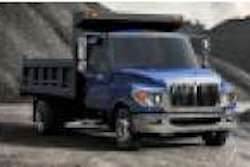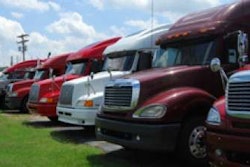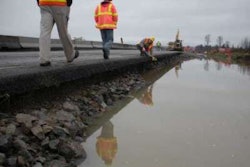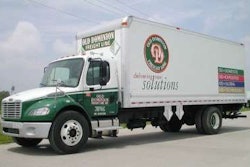Demanding less congestion

Politics in Washington have become so rancorous that even an issue on which there once was broad consensus – highway infrastructure – is a battleground. Legislators love to deliver road improvements – and the jobs they bring – to their home states and districts, but grassroots pressure and partisan battles have taken their toll on highway programs.
It’s clear that the national highway system requires a major infusion of capital just to maintain and restore aging roads and bridges. The U.S. Department of Transportation estimates that an additional $27 billion a year will be needed just to maintain current highway and bridge conditions over the next 20 years. And to make actual improvements that will reduce congestion substantially, you can roughly double that amount.
That’s quite a price tag, but the consequences of inaction are high as well. A study by the Texas Transportation Institute estimated that in 2007, drivers in metropolitan areas wasted 4.2 billion hours sitting in traffic, burning 2.8 billion gallons of excess fuel. And consider the follow-on financial impact of congestion in the form of lost efficiency in the supply chain.
So the needs are great, and the costs will be high. But where will we get the money? The trucking industry favors an increase in the federal motor fuels tax – even though it could cost the industry hundreds of millions of dollars more a year. The American Trucking Associations says the industry is willing to pay its fair share, as long as the source of revenue is easy and inexpensive to pay and collect, has a low evasion rate, is tied to highway use and does not create impediments to interstate commerce.
The federal diesel tax generates about $400 million a year for each penny collected, while the gasoline tax produces about $1.3 billion for each penny. Other forms of revenue generation – tolls on new and existing roads, congestion pricing and privatization of toll facilities – don’t meet ATA’s standards or are otherwise unfair, the group argues.
Don’t hold your breath for a higher gas tax.
But if you think that just a few pennies a gallon is no big deal, then you aren’t following politics very closely. Most members of Congress are terrified of even the hint of support for higher taxes unless the targets are big corporations – preferably banks or insurance companies – or extremely rich individuals. Sure, we’re probably talking about less than $50 more a year for the average motorist, but that’s hardly the point when it comes to electoral politics.
When Congress finally gets around to passing a long-term highway bill, don’t hold your breath that it will contain even a token increase in gas and diesel taxes. Instead, pressure may build to pass the buck to the states in the form of tolls and privatization, which can be spun as user fees and a free-market solution, respectively. Fortunately for trucking, the committees in charge of making this decision are not big fans of tolls and privatization because those mechanisms deprive Congress of control. But again, there are larger forces at work.
There’s no way around the rebuilding and resurfacing needed to preserve our existing infrastructure, but everyone overlooks a fundamental point: Congestion is a function of both supply and demand. A major expansion of highway capacity is many years away even with an infusion of funding. But in theory, significant congestion relief could come overnight if motorists simply reduced their driving.
For the discretionary driver, the fastest way to fewer miles – which we saw in 2008 – is sharply higher gas prices, but diesel prices would rise, too, so perhaps that’s not an ideal solution. Meanwhile, a modest increase in truck size and weight could help with congestion, but the politics of truck productivity are almost as daunting as the politics of taxes. Perhaps it’s time that we consider strong financial incentives to get people to take public transportation, carpool or telecommute, freeing the roads for vital freight transportation. Those steps alone won’t solve the problem, but neither will hoping for an increase in the gas tax. n













